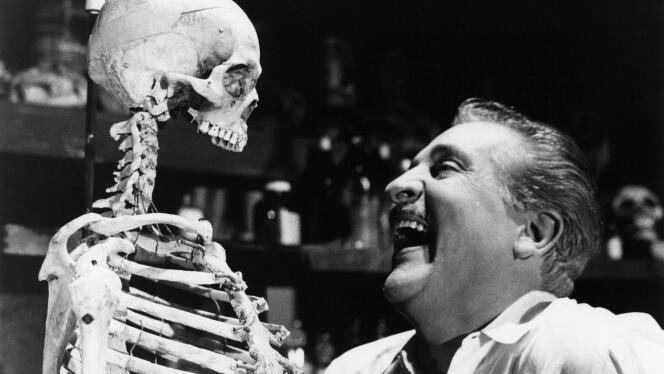Continuing the exploration of Mexican classics, this week the repertory rooms are exhuming, in restored version, The Skeleton of Madame Morales, a nugget of black comedy shining with its evil spirit. Its director, Rogelio A. Gonzalez (1922-1984), little represented in France, was a prolific studio artisan, a trained doctor who died at the age of 62 in a car accident, to whose memory are attached nearly seventy films of all kinds. No doubt we can better situate the film through its screenwriter, Luis Alcoriza (1918-1992), exiled from the Spanish civil war like his compatriot Luis Buñuel (1900-1983), for whom he wrote a number of major films during their Mexican retreat, including Los Olvidados (1950), El (Torments1953) or even The Exterminating Angel (1962). The spirit of surrealism actually hovers over The Skeleton of Madame Moralesto which is added another influence, a typically British macabre humor, Alcoriza being inspired by a short story by the Welsh horror writer Arthur Machen (1863-1947).
On a small square in a quiet neighborhood in Mexico City, Doctor Pablo Morales engages in taxidermist activities, much to the repugnance of his wife Gloria, a crippled shrew dedicated to good works. Between them, married life turned into trench warfare: he delighting in his little personal pleasures, she insisting on scrupulously making them worse for him; he sometimes feels a perverse desire for his wife, she stubbornly refuses him. Gloria does not hesitate to make her husband look like a brute, and herself like a martyr, in the eyes of the small, bigoted congregation she frequents. While at the local bar, in front of his drunken friends, the doctor in turn talks about the possibility of the perfect crime and the means of escaping justice. Little by little, the death drive that lay between them ended up gaining ground, and soon expressed itself.
The Skeleton of Madame Morales thus presents a grating variation on marital hell, passing through the satire the marital institution as the basis of bourgeois decay. The main setting of the film is the large gloomy house which serves as the couple’s prison, whose perspectives Rogelio A. Gonzalez explores with high and low angles, in black and white leaning towards expressionism. Husband and wife camp in their reserved space: Pablo in his workshop on the mezzanine floor, where a disturbing fauna of stuffed animals lies; Gloria in the upstairs bedroom, whose alcove status she has conjured with incredible religious trinkets.
You have 39.4% of this article left to read. The rest is reserved for subscribers.
